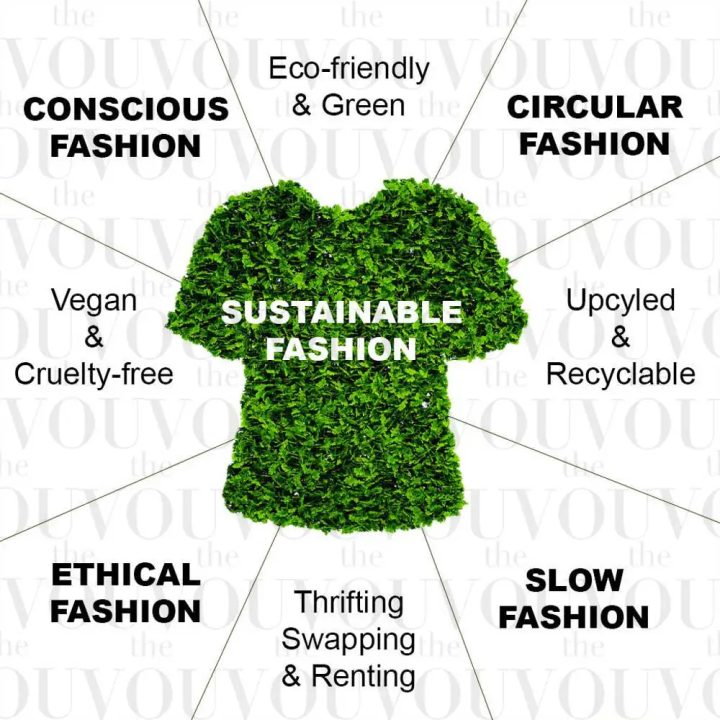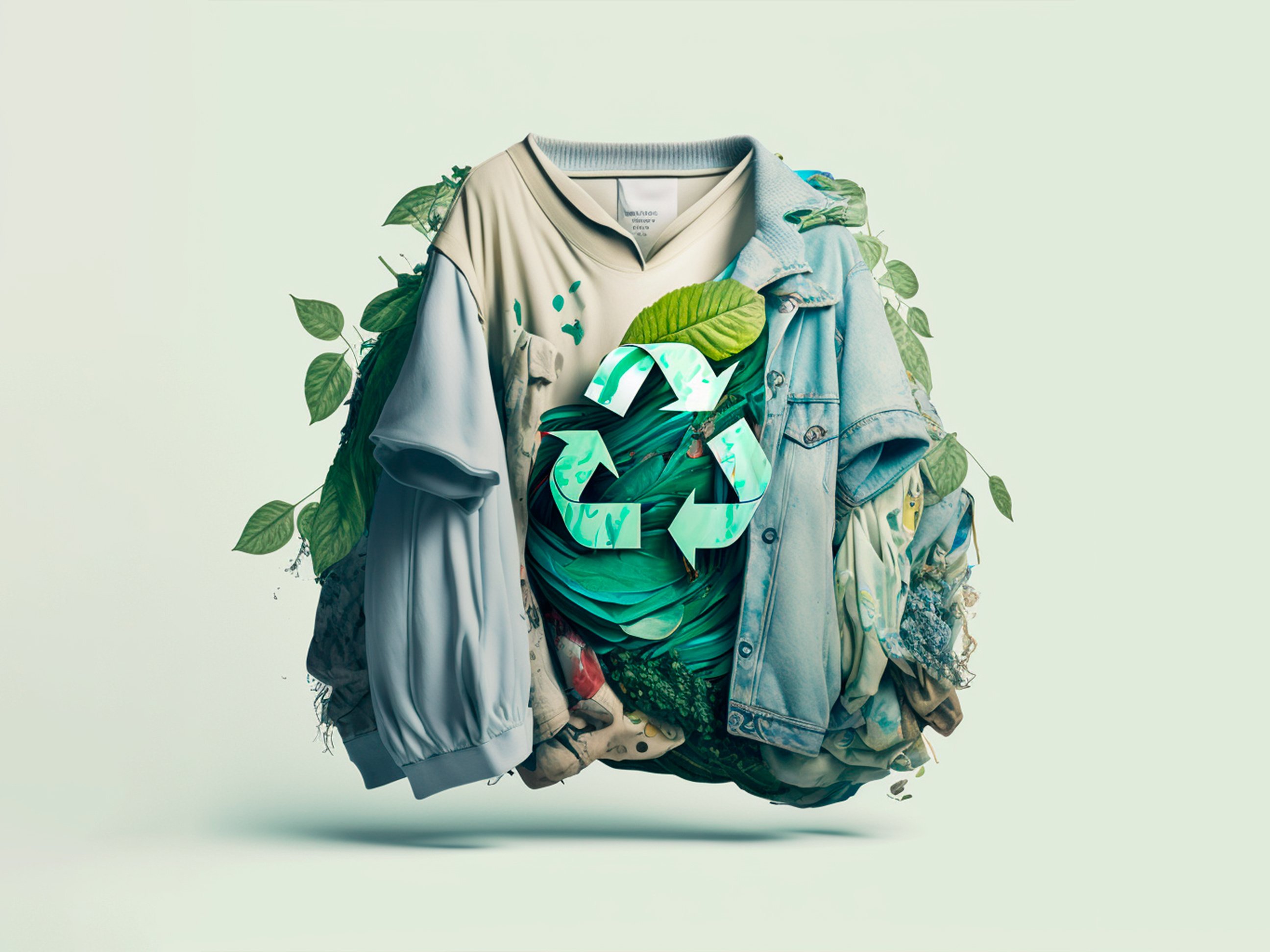Uncover Cape Town Sustainable Fashion Boutiques and Brands
Uncover Cape Town Sustainable Fashion Boutiques and Brands
Blog Article
Keep Ahead of the Contour by Discovering Innovative Fashion Patterns
In a market as vibrant as style, remaining in advance entails greater than just adhering to existing fads-- it requires an exploration of innovation. Smart fabrics, for circumstances, are transforming garments into useful masterpieces, while 3D printing is revolutionizing layout procedures with its customizable, waste-reducing capacities. As sustainability ends up being a keystone, innovations like eco-friendly materials and circular fashion methods are reshaping environmental responsibility - Cape Town Sustainable Fashion. Furthermore, the merging of innovation and fashion declares a brand-new age of consumer involvement. Exactly how, after that, can these emerging fads redefine the future of style, and what implications do they hold for brands seeking to grow in this developing landscape?

Welcoming Smart Textiles
In the last few years, the style industry has observed a transformative change with the combination of clever textiles, an innovative innovation that blends modern technology with material. This advancement stands for not only a fusion of aesthetic appeals and capability but also a significant jump towards sustainability and personalization in style. Smart textiles, additionally known as e-textiles, installed advanced electronic devices such as sensors and conductive strings within the fabric, allowing garments to communicate with the user or the environment.
These fabrics are designed to monitor physiological parameters, such as heart price or body temperature level, supplying real-time wellness analytics. Past health and wellness applications, wise textiles are also being utilized for flexible garments, which can transform color or pattern in feedback to environmental stimulations, therefore using a dynamic style experience.
Furthermore, the growth of energy-harvesting fabrics that produce power from activity or sunshine is paving the way for self-dependent wearable technology. This advancement is appealing to ecologically conscious customers and designers intending to reduce the eco-friendly footprint of style. As r & d in this area development, clever textiles are anticipated to become progressively prevalent, improving the landscape of contemporary style with their multifunctional capacities.
The Increase of 3D Printing
Transforming the production landscape, 3D printing has become a game-changer in the apparel industry. This cutting-edge innovation has enabled designers to press the boundaries of creativity, creating complex and personalized garments that were previously unimaginable. By leveraging digital design and additive production, 3D printing helps with the production of complicated geometries and patterns, allowing developers to try out new appearances and structures.
A significant benefit of 3D printing in vogue is its ability to produce on-demand, decreasing waste and reducing supply demands. This performance not just maximizes production processes yet likewise enables quick prototyping, enabling designers to bring their visions to life in a shorter timeframe. In addition, 3D printing sustains personalization to a level unrivaled by conventional techniques, supplying individualized fits and unique styles tailored to individual consumer choices.
The rise of 3D printing has likewise equalized fashion, making it obtainable to arising designers who can currently produce high-quality items without considerable financial investment in standard manufacturing infrastructure. As modern technology remains to advance, the garment industry is poised to harness the complete potential of 3D printing, exploring brand-new products and techniques that will undoubtedly redefine just how style is conceived and created.
Sustainable Style Developments
As the garment industry comes to grips with the pressing demand for ecological obligation, sustainable style innovations have emerged at the center of transformative modification. The growing understanding of environmental influence has actually sustained a change in the direction of more eco-conscious practices and materials. Designers and brand names about his are now prioritizing sustainability, incorporating approaches that reduce waste and lower carbon impacts.
One substantial growth is the surge of round fashion, which highlights recycling and upcycling to prolong the lifecycle of garments. This method not just decreases waste but additionally encourages customers to adopt a more mindful method to apparel consumption. In addition, using lasting materials, such as organic cotton, hemp, and recycled polyester, has gained traction. These products need less water and energy during manufacturing, substantially decreasing ecological effect.
Another development lies in the fostering of ingenious dyeing methods that utilize waterless procedures or all-natural dyes, therefore decreasing the large quantities of water and chemicals traditionally utilized in textile dyeing. In addition, advancements in biotechnology have actually brought about the development of lab-grown natural leather and materials, using environmentally friendly and cruelty-free choices to conventional materials. Through these introducing initiatives, the garment industry is making significant strides in the direction of a much more lasting future.

Tech-Integrated Apparel
Tech-integrated clothing represents a groundbreaking blend of style and innovation, reshaping just how individuals interact with their garments. This innovative domain is noted by the addition of clever fabrics and embedded electronic components, improving both capability and aesthetic appeal. From health and fitness trackers installed in sportswear to warmed coats managed via mobile phone apps, tech-integrated clothing provides customers extraordinary ease and flexibility.
Introducing brands are driving this fad, concentrating on developing garments that reply to ecological stimulations or user commands. For circumstances, some garments can alter shade or pattern in feedback to temperature shifts, while others incorporate biometric sensing units to keep track of wellness metrics like heart price or stress levels. The smooth combination of technology into fabrics also prolongs to ecological sustainability, with initiatives to establish self-cleaning textiles or garments that get used to climate condition, therefore check these guys out decreasing the need for numerous layers.
Moreover, the introduction of wearable modern technology is not simply restricted to apparel yet includes accessories like watches and eyewear, more widening the scope of tech-integrated fashion. As the industry remains to introduce, the capacity for customization and customization in clothing grows, supplying customers distinct, tech-enhanced style experiences that deal with their specific requirements and preferences.
Future of Virtual Fashion
In recent years, the future of online style has become a transformative force within the industry, leveraging innovations in digital modern technology to redefine exactly how style is created, experienced, and taken in. By integrating enhanced reality (AR), virtual truth (VR), and 3D layout tools, developers can currently craft immersive and interactive experiences that transcend standard directory fashion borders. Virtual fashion permits the creation of garments that exist exclusively in digital settings, providing unlimited opportunities for technology without the constraints of physical manufacturing.
This electronic shift not just offers possibilities for innovative expression however likewise addresses sustainability problems integral in traditional fashion methods. Cape Town Sustainable Fashion. By removing the demand for physical resources, digital fashion decreases waste and lessens carbon impacts. Additionally, the surge of virtual fashion lines up with the enhancing customer demand for tailored and unique experiences, as digital garments can be personalized and customized to specific preferences effortlessly

Verdict
The fashion business's future hinge on the assimilation of ingenious innovations and sustainable methods - Cape Town Sustainable Fashion. Smart textiles and tech-integrated apparel are enhancing functionality, while 3D printing uses possibilities for modification and waste decrease. Sustainable fashion, via circular approaches and green products, demonstrates a commitment to ecological stewardship. Furthermore, digital fashion is poised to redefine customer interactions. Adapting to these trends is crucial for brands seeking to remain appropriate and affordable in this rapidly advancing landscape.
In current years, the style industry has seen a transformative change with the assimilation of wise fabrics, an advanced advancement that blends technology with fabric.As the fashion sector grapples with the pressing requirement for environmental obligation, lasting style innovations have actually emerged at the forefront of transformative modification.In current years, the future of virtual style has actually emerged as a transformative pressure within the sector, leveraging improvements in electronic modern technology to redefine exactly how fashion is produced, experienced, and consumed. The increase of online style straightens with the increasing customer demand for individualized and unique experiences, as online garments can be customized and customized to specific choices with ease.
The style industry's future lies in the combination of innovative modern technologies and sustainable practices.
Report this page